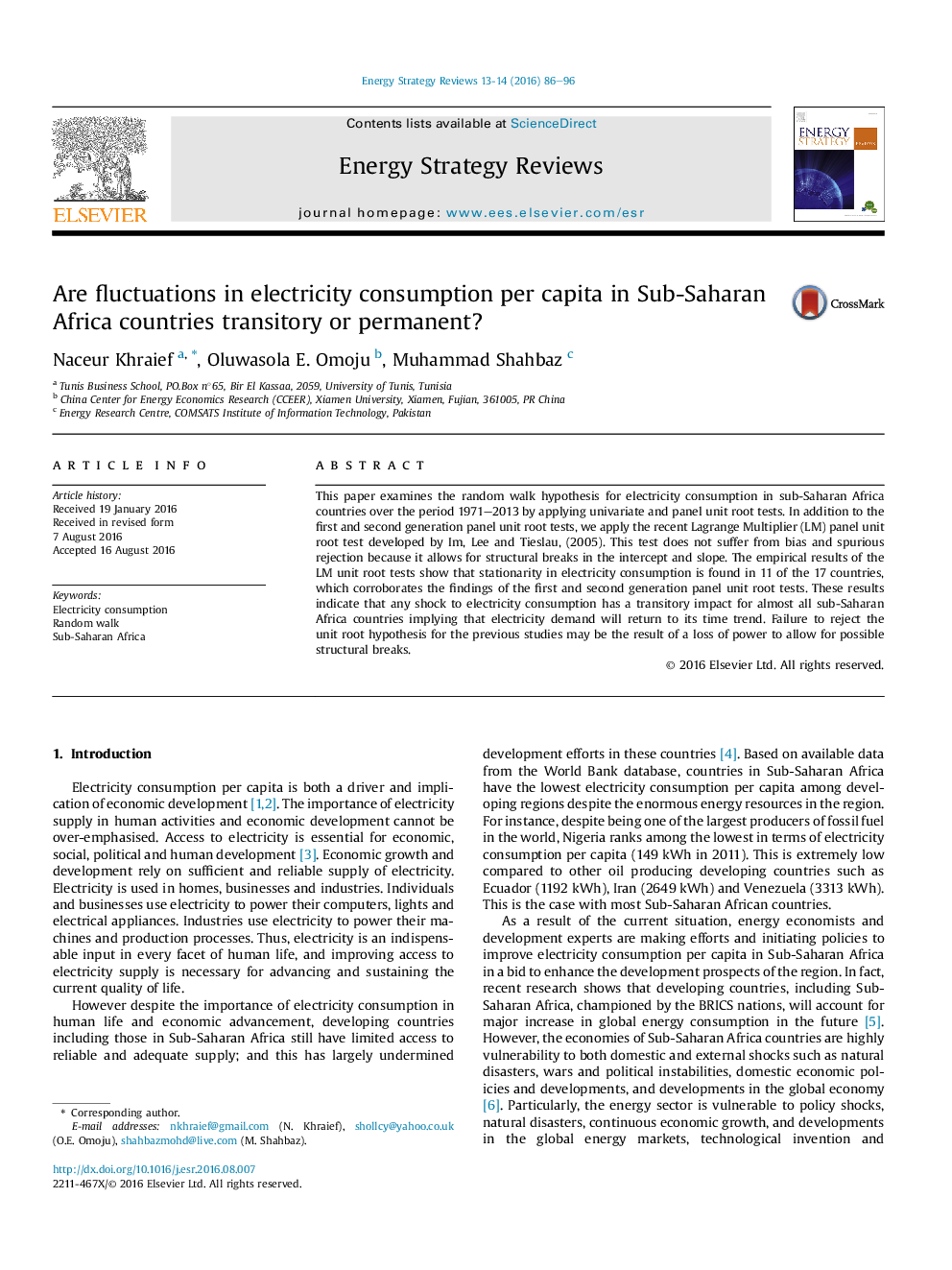| کد مقاله | کد نشریه | سال انتشار | مقاله انگلیسی | نسخه تمام متن |
|---|---|---|---|---|
| 1029769 | 1483526 | 2016 | 11 صفحه PDF | دانلود رایگان |
• Investigating the stationary of electricity consumption in in sub-Saharan African countries by applying linear and non linear unit root tests.
• Applies panel unit root tests that allow for cross country dependencies and structural breaks.
• Electricity consumption is stationary.
• Shocks to electricity demand have transitory impacts implying that energy consumption will turn back to its time trend.
This paper examines the random walk hypothesis for electricity consumption in sub-Saharan Africa countries over the period 1971–2013 by applying univariate and panel unit root tests. In addition to the first and second generation panel unit root tests, we apply the recent Lagrange Multiplier (LM) panel unit root test developed by Im, Lee and Tieslau, (2005). This test does not suffer from bias and spurious rejection because it allows for structural breaks in the intercept and slope. The empirical results of the LM unit root tests show that stationarity in electricity consumption is found in 11 of the 17 countries, which corroborates the findings of the first and second generation panel unit root tests. These results indicate that any shock to electricity consumption has a transitory impact for almost all sub-Saharan Africa countries implying that electricity demand will return to its time trend. Failure to reject the unit root hypothesis for the previous studies may be the result of a loss of power to allow for possible structural breaks.
Journal: Energy Strategy Reviews - Volumes 13–14, November 2016, Pages 86–96
